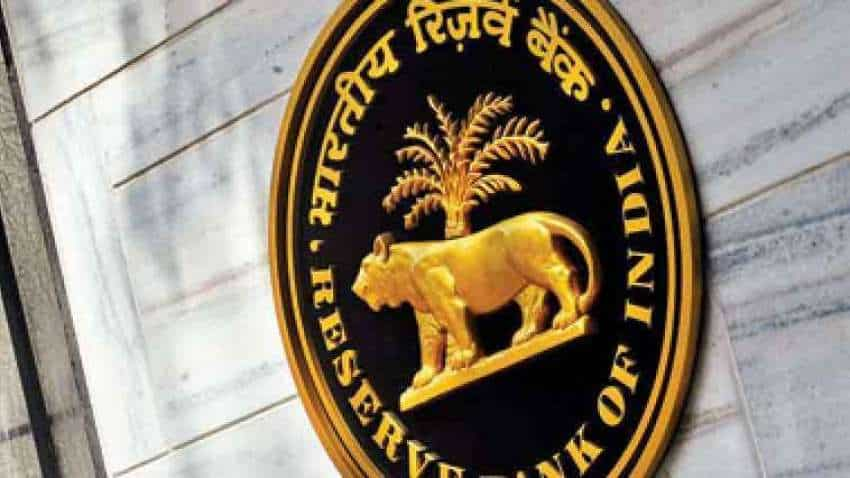RBI proposals to restrict land financing by NBFCs: Report
The Reserve Bank`s proposals on restricting specific real estate funding by NBFCs will significantly affect land financing by them, India Ratings and Research (Ind-Ra) said in a report.

The Reserve Bank`s proposals on restricting specific real estate funding by NBFCs will significantly affect land financing by them, India Ratings and Research (Ind-Ra) said in a report.
In a recent discussion paper, the RBI proposed to restricts real estate funding to only those projects wherein the approvals or permissions are in place
New norms such as board-approved limits for exposure to commercial real estate sector and internal sub-limits for financing land acquisition have also been proposed.
See Zee Business Live TV Streaming Below:
Besides, the discussion paper stipulates capping the exposure in case of other sensitive sectors such as the capital market.
Accordingly, these proposals are seen as curtailing the risks faced by NBFCs.
"The wholesale NBFCs that have been using structuring to fund land acquisitions have generally been averse to funding land acquisitions over the last couple of years.
"However, the regulation proposed by the discussion paper will impact the business flexibility for real estate-financing NBFCs, which take exposures at several stages of the project."
As per the Ind-Ra report, exposure at the nascent stage of the project carries better margins and enables the NBFC to compensate for the lower margins that it makes on the exposures on advanced-stage projects, which is where it faces competition from banks.
"Having said that, the revised norms put a check on the asset side risks for these NBFCs."
Furthermore, the report cited the proposed restriction on NBFCs to provide loans for the buyback of shares or securities would affect the business model of wholesale NBFCs, which have developed the expertise of offering structured credit to their borrowers in cases wherein banks could not fund them due to regulatory restrictions.
An exposure cap of up to Rs 10 million has also been suggested for initial public offering (IPO) financing.
"In a nutshell, the paper aims at putting stricter regulatory guard rails for wholesale NBFCs, since these are exposed to higher asset side risk and also carry concentration risk in their portfolio."
The paper further talked about base-level NBFCs with an asset size of less than Rs 10 billion.
According to an Ind-Ra estimate, out of the total of about 9,400 NBFCs and about 100 HFCs, only about 200 NBFCs and HFCs would have an asset size that would be higher than this.
"The incremental regulations will be limited for these to the extent of increasing the base level capital to INR 0.2 billion and moving the NPA recognition norm to 90 DPD,"<br /><br />
"Ind-Ra believes that the raising of the capital limit to INR 0.2 billion may prompt many NBFCs that have minuscule level of operations to consider surrendering their NBFC licences."
In addition, the paper proposed new disclosure norms and strengthened corporate governance framework.
These, the report said, will go a long way in reducing the information asymmetry within the NBFC space and instil confidence among various stakeholders.
"A stronger and independent board will infuse the resilience in NBFCs to tide over the challenging operating environment and carry on their operations, maintaining a judicious balance between risk and returns."
The RBI had issued the discussion paper on January 22, 2020, with the objective of curtailing the spill-over risk that an NBFC default could pose to the entire financial ecosystem.
The main suggestions put forth by the draft discussion paper were changes in exposure norms, improving corporate governance framework, increasing capital requirement, improving disclosure standards, strengthening technological backbone and changing provisioning norms.
"While the paper does articulate bank-like regulations for a certain category of NBFCs, it has not specifically discussed the cash reserve ratio (CRR) and statutory lending ratio (SLR) requirements for them."
"Furthermore, while the paper talks about the risk weight arbitrage for NBFCs in the context of standard asset provision, and also articulates a common equity tier-1 (CET-1) of 9 per cent for a certain category of NBFCs, it does not deal with the industry demand on risk weight benefit that is applicable to banks.
Get Latest Business News, Stock Market Updates and Videos; Check your tax outgo through Income Tax Calculator and save money through our Personal Finance coverage. Check Business Breaking News Live on Zee Business Twitter and Facebook. Subscribe on YouTube.
RECOMMENDED STORIES

Power of Rs 15,000 SIP: How long it will take to achieve Rs 7 crore corpus? See calculations to know

Largecap, Midcap, Smallcap Stocks To Buy: Analysts recommend buying 3 stocks for 2 weeks; note down targets

Largecap PSU Stock for 65% Gain in New Year: Anil Singhvi picks PSU bank for long term; know reasons and target prices

Power of Rs 5,500 SIP: In how many years, Rs 5,500 monthly step up SIP can generate over Rs 10 crore retirement corpus
02:38 PM IST









 Rs 2000 notes withdrawal: Rs 6,691 crore worth such notes still with public
Rs 2000 notes withdrawal: Rs 6,691 crore worth such notes still with public  Gross NPA ratio of India's banks falls to 12-year low of 2.6%
Gross NPA ratio of India's banks falls to 12-year low of 2.6% RBI sets up 8-member panel on ethical use of AI
RBI sets up 8-member panel on ethical use of AI Indian economy is recovering from slowdown witnessed in July-September quarter: RBI
Indian economy is recovering from slowdown witnessed in July-September quarter: RBI RBI: After another status quo year, all eyes on a growth-propping rate cut with new Guv at helm By Ashish Agashe
RBI: After another status quo year, all eyes on a growth-propping rate cut with new Guv at helm By Ashish Agashe